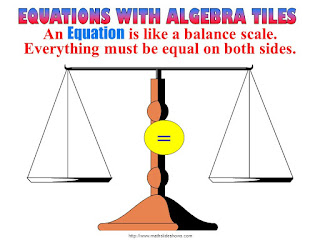The World of Algebra
 |
| Retrieved from http://images.slideplayer.com/27/9193139/slides/slide_5.jpg |
Resources for Teachers
One excellent resource for teaching math in elementary school is a highly reviewed children's book titled The Grapes of Math by Greg Tang and Harry Briggs. This book creates a visual for students to see math equations in relation to food items such as grapes and pizza. I would definitely recommend using this book for teaching patterns and how to use combinations of numbers to solve math questions. It gives students a fun visual that they can relate to learning math.
Retrieved from https://www.youtube.com/watch?v=ZDf1Z_E4jH4
We were able to see algebra relationships through the use of patterns, which can be drawn or explained visually through the use of charts or physical objects (blocks work well for this activity). Students can view a growing or shrinking pattern and then translate it into an algebra equation.
 |
| Retrieved from http://researchideas.ca/wmt/c2b3.html |
The following video demonstrates the step-by-step process for developing an algebra equation out of a growing pattern. This is a common skill that students learn in early grades and expand upon throughout elementary school. I found this video to be helpful in understanding the process of creating equations out of patterns.
Retrieved from https://www.youtube.com/watch?v=PhFhnUJIhw0
Curriculum Guidelines
According to the 2005 Ontario Mathematics Curriculum for grades 1-8, patterning and algebra is something that is explored through all grades, beginning in grade one. The Overall Expectation for Patterning and Algebra explains that "in the junior grades, students use graphs, tables, and verbal descriptions to represent relationships that generate patterns. Through activities and investigations, students examine how patterns change, in order to develop an understanding of variables as changing quantities. In the intermediate grades, students represent patterns algebraically and use these representations to make predictions" (page 9)
Overall, patterning and algebra expands over junior and intermediate grades. It is important to develop these math skills in the early years so that later development can be accomplished.


Comments
Post a Comment